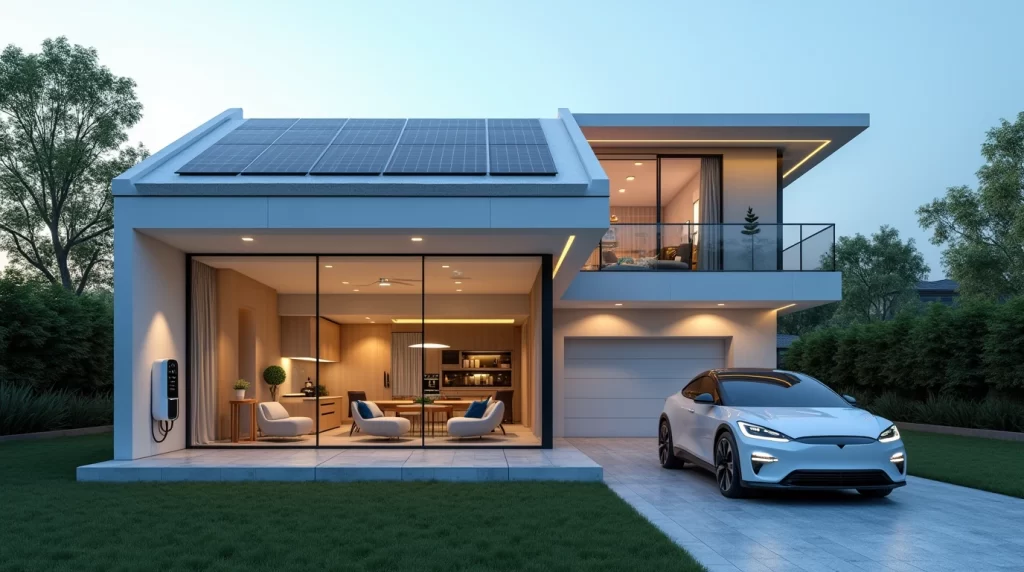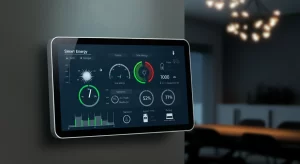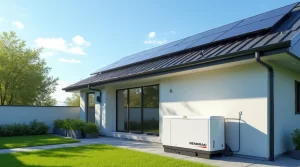As we approach 2025, home electrical systems are evolving rapidly. From rising energy costs and environmental concerns to the growing popularity of electric vehicles (EVs) and AI-driven appliances, the next few years will bring innovations that fundamentally change how we power and protect our homes. Whether you’re planning a renovation, building a new home, or simply curious about what lies ahead, here’s a look at the top electrical trends for the not-so-distant future—and how you can prepare for them now.
1. The Smart Grid Becomes Standard
Why It Matters:
Smart grids use digital technology to monitor and manage energy flow, enhancing reliability and efficiency. By 2025, many U.S. regions will have made substantial progress integrating smart grid infrastructure, allowing two-way communication between utilities and homeowners.
Key Benefits:
- Real-Time Adjustments: Automated load balancing to reduce blackouts and brownouts.
- Dynamic Pricing: Homeowners can take advantage of off-peak rates and schedule energy-intensive tasks when electricity is cheapest.
- Remote Monitoring: Utilities and consumers can track consumption patterns and detect issues before they escalate.
How to Prepare:
- Consider installing smart meters that offer detailed energy usage data.
- Explore utility incentives for adopting advanced metering infrastructure.
2. Solar + Battery Storage as Mainstream Energy Solutions
Why It Matters:
Increasingly affordable photovoltaic (PV) panels and energy storage solutions are shifting homes toward partial or full energy independence. By 2025, we’ll see more robust financing programs and government policies encouraging homeowners to adopt solar-battery combos.
Key Benefits:
- Lower Electricity Bills: Harnessing free solar power reduces monthly energy costs.
- Backup Power Security: Batteries can serve as mini-reserves during blackouts, complementing or even replacing generators.
- Sustainability: Reduced reliance on fossil fuels, aligning with growing eco-consciousness.
How to Prepare:
- Panel Upgrades: Evaluate your roof’s structural capacity; older homes may need reinforcements or roof replacements.
- Battery Compatibility: Consider pairing new or existing solar arrays with energy storage units that offer advanced features like app-based monitoring.
- Code Compliance: Consult local regulations or a professional electrician, ensuring any solar install meets evolving standards.
(For more insights on preparing your home’s electrical infrastructure, check out our article on Maximizing Home Comfort: Essential Electrical Upgrades for a Cozy Winter.)
3. EV Charging Shifts from Perk to Necessity
Why It Matters:
Electric vehicle adoption is skyrocketing. By 2025, EVs will occupy a larger market share, making at-home charging stations more than just a “nice to have.” They’re quickly becoming essential for daily life and property value.
Key Benefits:
- Convenience: Eliminate the need to visit public charging stations.
- Cost Savings: Charge during off-peak hours to reduce electricity bills.
- Property Value Boost: Homes equipped with Level 2 or higher charging stations may command higher resale prices.
How to Prepare:
- Panel Capacity Check: Ensure your home’s panel can support a dedicated 240V circuit for EV charging.
- Future-Proof Wiring: If you’re building or renovating, pre-install conduit and wiring that accommodate Level 2 or Level 3 chargers.
- Smart Chargers: Consider models with Wi-Fi or app integration, enabling you to schedule charging times and monitor energy usage.
(Need help deciding which charger suits your needs? Read our guide on What Size Generator Is Needed to Power a House? for panel capacity insights—similar principles apply to EV chargers.)
4. AI-Driven Appliances and Energy Management
Why It Matters:
Artificial Intelligence (AI) is no longer confined to science fiction. By 2025, more household appliances—ovens, refrigerators, HVAC units—will use AI to optimize energy use, predict maintenance needs, and adapt to your lifestyle.
Key Benefits:
- Automated Efficiency: Smart thermostats learn your schedule, adjusting temperatures to maximize comfort and minimize costs.
- Predictive Maintenance: AI-enabled devices can detect anomalies (like a motor running hot) before breakdowns occur.
- Seamless Integration: Appliances communicate with each other and the utility, ensuring home-wide energy balance.
How to Prepare:
- Robust Wi-Fi Network: Many AI appliances rely on fast internet connections for real-time data.
- Smart Home Hubs: Centralize control through systems like Google Home, Amazon Alexa, or specialized energy management apps.
- Secure Installation: Protect your network with strong passwords and updates, as more connected devices mean more potential cybersecurity risks.
(For additional resources, check the National Fire Protection Association (NFPA) for guidelines on safe appliance integration.)
5. Microgrids and Community Power Sharing
Why It Matters:
A microgrid is a localized grid that can disconnect from traditional utility networks and operate independently. By 2025, many neighborhoods or planned communities will experiment with microgrids—pooling resources from rooftop solar, shared battery storage, and EV chargers to stabilize local power.
Key Benefits:
- Enhanced Reliability: Microgrids can keep the lights on during utility-wide outages.
- Cost-Sharing: Communities share installation and maintenance expenses, making advanced tech more accessible.
- Eco-Friendly Collaboration: Shared renewable energy fosters a greener, more resilient local grid.
How to Prepare:
- Homeowner Association Coordination: If you live in a planned community, discuss or propose microgrid feasibility studies.
- Installation of Interconnection Equipment: Prepare for potential future microgrid hook-ups with an electrician who understands local codes for distributed energy resources (DER).
6. Evolving Codes and Standards
Why It Matters:
Local and national electrical codes are updating to accommodate new technologies, from high-capacity EV chargers to integrated battery systems. By 2025, homeowners might face stricter requirements for GFCI/AFCI outlets, load calculations, and surge protection.
Key Benefits:
- Enhanced Safety: Newer codes help prevent electrical fires, shocks, and overload scenarios.
- Future-Proofing: Upgrading to meet or exceed code standards now minimizes costly retrofits later.
- Insurance and Resale: Compliance can reduce premiums and simplify the home resale process.
How to Prepare:
- Professional Consultation: Schedule a licensed electrician to inspect your current setup.
- Permit and Inspection Awareness: Keep up with local building department regulations.
- Continuous Learning: Subscribe to newsletters or follow local utility updates for changes in code or incentive programs.
Conclusion: Embrace 2025 with a Forward-Thinking Electrical Plan
The future of home electrical systems promises greater efficiency, autonomy, and intelligence—yet it also brings new considerations for capacity, safety, and code compliance. Whether you’re eyeing solar-battery storage, prepping for your first EV, or simply aiming to make your home smarter, now is the time to plan.
Ready to future-proof your home’s electrical system? The licensed professionals at Kendrick Electric are here to guide you through upgrades, installations, and compliance checks. Let’s tackle 2025 and beyond together—so you can enjoy cutting-edge convenience and peace of mind.



